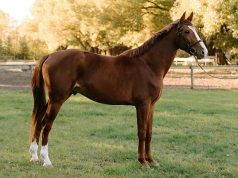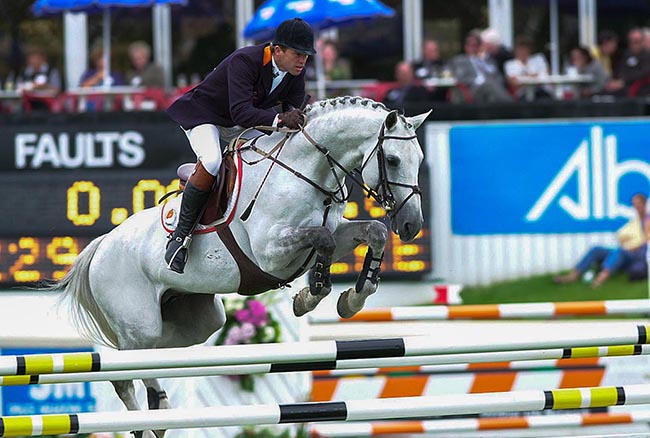By Taru Nittynena, Veera Riihonenb, Liza R. Moscovicec, Sonja E. Koskid
Graphics: The authors
Ensuring horse welfare is a central aim in equestrian activities. Training is an important context for welfare, as horses form long-lasting representations of people and actions at a young age. However, only a few studies have addressed horses’ emotional responses during early training with humans.
In this study, we followed N=19 young horses, including naïve yearlings and more experienced two- to three-year-olds, through five foundation training sessions over nine months. Our goal was to combine physiological and behavioral measures to assess emotional responses to early foundation training. Specifically, we measured salivary oxytocin (sOXT) in N=100 samples and salivary cortisol (sCORT) in N=96 samples before and after training sessions. We also recoded behavioral responses during training. Changes in sOXT during training predicted individual variation in behavioral responses: Horses who showed more affiliative human-directed behaviors during training had increases in sOXT, while horses who showed more behavioral indicators of discomfort during training had decreases in sOXT.
Salivary cortisol was not related to individual behavioral responses, but experienced horses had lower sCORT concentrations both before and after training, and all horses showed decreases in sCORT and in behaviors indicative of fear or discomfort as training progressed. In addition, sCORT increased during longer training sessions, consistent with the established role of cortisol in responding to physical stressors. We conclude that individual variation in positive or negative behavioral responses to foundation training corresponds with acute changes in sOXT concentrations in young horses, suggesting that sOXT may be useful as a non-invasive indicator of emotional responses in young horses.
1. Introduction

Horses used in sports or recreational activities require systematic training to be safe to handle and to learn the various tasks required of them. Horses are typically subjected to their task specific training from three years of age onwards, preceded by foundation training in which horses learn basic responses before being ridden (McGreevy et al., 2018).
Young horses may experience considerable stress during training, as measured by changes in behavior and physiology (e.g., Schmidt et al., 2010a; Kedzierski et al., 2012). There is also concern that some training and restraint practices may cause physical injuries and discomfort (McLean and McGreevy, 2010). Therefore, increasing attention is being given to training practices and their effects on horses’ emotional well-being (McGreevy and McLean, 2007, King et al., 2018, ISES, 2018). While emotions cannot be directly assessed in animals, there have been major advances in recent years in methods for indirect assessment of emotions, based on identifying short-term changes in behavior, physiology and/or cognition in response to biologically-relevant stimuli that help individuals to avoid harmful situations and to seek out positive and rewarding experiences (reviewed in: Mendl et al., 2010; Paul and Mendl, 2018).
As training lays the base for the horses’ experiential knowledge of interactions with people, promoting positive emotions and reducing negative emotions during training is highly relevant (Sankey et al., 2010a, Sankey et al., 2010b). However, it is still relatively unclear how various training practices influence horses’ emotions and welfare, and how this is related to horses’ age and previous experience with humans. Handling at a very young age has been proposed to affect horses’ later emotional expression and trainability. Neonatal handling may decrease emotionality and facilitate learning (Heird et al., 1986, Henry et al., 2009), although the effects may be only temporary (Lansade et al., 2005), and may result in too-familiar attitudes towards humans, which may in turn cause a lack of motivation later in life (Pereira-Figueiredo et al., 2017).
Some studies show that ‘sympathetic’ (or: ‘freestyle’) training, which proceeds stepwise and is adjusted to individual progress, is less stressful than standard training in 2- to 3-year-olds (Visser et al., 2009, Kedzierski et al., 2012) and results in improved relationships with people (Fureix et al., 2009). Yet, the classical European training program has been reported to cause only mild elevation stress in 3-year-olds, as measured by cortisol and heart rate, with the exception of first mounting, which is a significant stressor (Schmidt et al., 2010a).
There is also debate over the application of ‘natural horsemanship’ practices, which aim to adopt horses’ natural social behavior to the context of training with humans (McGreevy et al., 2009). Some studies suggest that application of natural horsemanship methods results in accelerated learning and lower heart rates than conventional training (Fowler et al., 2012), but others have argued that these methods increase stress and fear and involve erroneous assumptions about dominance (Fenner et al., 2018, McGreevy et al., 2009). It has also been suggested that ultimately, horses’ emotional responses to the applied training depend more on the trainer’s skills than on the method as such (Rozempolska-Rucinska et al., 2013)... To read the complete article you need to be a subscriber
CLICK HERE TO SUBSCRIBE TO BREEDING NEWS
SUBSCRIBERS CAN READ THE COMPLETE ARTICLE BY LOGGING IN AND RETURNING TO THIS PAGE



